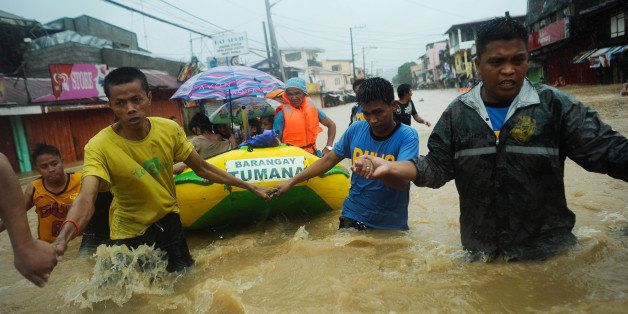
Growing up, my friends and I looked forward to the monsoon season as it meant we would have the opportunity to play in the rain. With no guilt, we would pray that our area would be declared under the Storm Warning Signal No. 3 which would mean that classes would be cancelled and we would have the day off to run in the rain. Back then, typhoons were rarely synonymous to disasters.
Thus, it strikes me to disbelief every time I am reminded that the climate, in a span of about two decades, has changed so drastically that I can stand witness to it. The monsoon rains and the winds that come with them evoke fear among the Filipinos -- they worry about when the next typhoon will come, where it will make landfall, how much damage it will cause, and how many lives it will take.
As a child, I saw that the rain would have the effect of cleansing the ground, clearing the dust that has accumulated during the dry summer months. Today, as soon as the rain leaves, I worry about how much rubble I will see on the ground and how many people have been reduced to mere statistics to account for the number of injured, or worst -- the number of deaths.
The Philippines is not able to adapt fast enough to the increasing severity of weather conditions. Almost a year after the super typhoon Haiyan, people still live in tents -- bare and exposed to another season of typhoons. In July, typhoon Rammasun made landfall and brought heavy rains and strong winds in the already battered city of Tacloban. Fear and panic caused by their bitter experience forced the traumatized Haiyan survivors back to the evacuation center they fled to eight months ago.
Now the United Nations will host a Climate Summit at its Headquarters in New York on 23 September, with more than 120 Heads of State participating, to mobilize political will and highlight actions being taken to address climate change. And although the Summit is not part of the negotiations on climate actions and commitments, it provides an occasion to set the tone for the climate negotiations in Peru in December and Paris in 2015.
I have been given the privilege to be among the civil society representatives selected to attend through a global nomination process conducted by the UN Non-Governmental Liaison Service. This opportunity will allow me to amplify the voices of people like me who have been impacted by and who remain vulnerable to climate change, and to ensure that the voices of those in the frontline will be heard in yet another arena.
For us who belong to affected communities, the effects of a warming planet due to the failure to address the climate crisis impose upon us greater risks and increased vulnerability. And although we appreciate the global assistance and mobilization from around the globe, we want to remind the world that our experience with Haiyan is not a matter of charity or outreach but is the consequence of the failure to address the climate crisis. Therefore, we have to maximize all avenues provided to us to bring forward the issues and solutions that are important for our survival.
Thus, we urge the Heads of State to take strong strides to keep up with the fast changing climate and to commit to alleviating the effects of global warming. We demand an ambitious, drastic, and immediate emissions cut. We demand an energy transformation that will ban new dirty energy projects and transition towards accessible, democratic, sustainable and clean energy that is community-based and managed, and publicly controlled.
We call for a strong and serious commitment from developed countries to help peoples with their adaptation needs, to ensure that loss and damages mechanisms are in place, and to guarantee the transfer of finance and technology to assist with the climate crisis.
And because the warming planet is a global issue, every country must work collectively to resolve the climate crisis. This Climate Summit could provide one of the arenas to build up that collective effort and to ensure the survival of the people who belong to most vulnerable communities.
This post is part of a month-long series produced by The Huffington Post in conjunction with a variety of events being held in September recognizing the threats posed by climate change. Those events include the UN's Climate Summit 2014 (that was held Sept. 23, 2014, at UN headquarters in New York) and Climate Week NYC (Sept. 22-28, 2014, throughout New York City). To see all the posts in the series, read here.